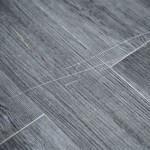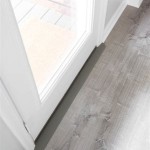Can You Put Vinyl Flooring in Bathrooms?
Vinyl flooring has become a popular choice for bathrooms due to its durability, ease of maintenance, and realistic designs that mimic natural materials. However, the question remains: Can you put vinyl flooring in bathrooms, where moisture and humidity are prevalent?
The answer is yes, but it depends on the type of vinyl flooring and how it is installed. Here are the essential aspects to consider when deciding whether vinyl flooring is suitable for your bathroom:
1. Type of Vinyl Flooring
There are two main types of vinyl flooring: luxury vinyl tile (LVT) and sheet vinyl. LVT is made of individual planks or tiles that click together, while sheet vinyl is a continuous sheet that is glued or welded to the subfloor.
LVT is more resistant to moisture than sheet vinyl and is generally recommended for bathrooms. Sheet vinyl, on the other hand, is not as waterproof and may be more susceptible to moisture damage.
2. Installation Methods
The installation method also plays a crucial role in the performance of vinyl flooring in bathrooms. Floating LVT is installed over an underlayment, without glue or nails. This method allows the flooring to expand and contract with changes in temperature and humidity, preventing buckling and warping.
Glue-down LVT and sheet vinyl are adhered directly to the subfloor. These methods provide a more permanent bond, but they can be more susceptible to moisture damage if the subfloor is not properly prepared and sealed.
3. Subfloor Preparation
Regardless of the type of vinyl flooring or installation method, it is essential to ensure that the subfloor is properly prepared. The subfloor should be level, dry, and free of any contaminants that could compromise the adhesion of the flooring.
In bathrooms, it is recommended to use a moisture barrier, such as a plastic sheet or liquid-applied membrane, on the subfloor before installing vinyl flooring. This will help prevent moisture from seeping up from the subfloor and damaging the flooring.
4. Grout and Sealants
If you choose to use grout between LVT tiles, it is crucial to use a non-sanded grout that is specifically designed for vinyl flooring. Sanded grout can scratch the surface of the tiles.
Once the grout is applied, it should be sealed with a waterproof sealant to prevent moisture from penetrating the grout lines and causing damage to the flooring.
5. Maintenance and Care
Proper cleaning and maintenance are essential to ensure the longevity of vinyl flooring in bathrooms. Use a mild cleaner and a soft mop or cloth to clean the floor regularly. Avoid using harsh chemicals or abrasive cleaners, as these can damage the surface of the flooring.
In addition, it is recommended to use a vinyl flooring protector in high-traffic areas to prevent scratches and scuffs. This will help maintain the beauty and integrity of your vinyl flooring for years to come.
By following these guidelines, you can enjoy the benefits of vinyl flooring in your bathroom, creating a stylish and durable space that can withstand the challenges of moisture and humidity.

Vinyl Planks In Bathrooms Residential Inspiration Flooring

Can You Renovate Bathrooms With Vinyl Flooring Imagine Floors

Dos And Don Ts For Installing Vinyl Plank Floors In The Bathroom Advice Homeowners

Luxury Vinyl Flooring Is A Great Choice For Chic Bathrooms

Can Vinyl Flooring Be Used In A Bathroom Hallmark Floors

How To Install Vinyl Plank Flooring In A Bathroom Fixthisbuildthat

How To Install Sheet Vinyl Floor Decor Adventures

What Is The Best Flooring For Bathrooms Tarkett

7 Benefits Of Bathroom Vinyl Flooring Victorian Plumbing

How To Lay Vinyl Floor In A Bathroom Dove Cottage
Related Posts








